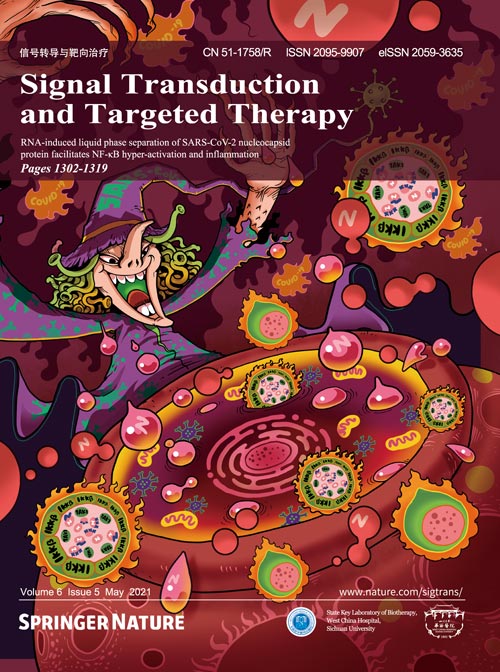Volume 6 Issue 5, May 2021:
Article
The olfactory route is a potential way for SARS-CoV-2 to invade the central nervous system of rhesus monkeys
Li Jiao,Yun Yang,Wenhai Yu,Yuan Zhao,Haiting Long,Jiahong Gao,Kaiyun Ding,Chunxia Ma,Jingmei Li,Siwen Zhao,Haixuan Wang,Haiyan Li,Mengli Yang,Jingwen Xu,Junbin Wang,Jing Yang,Dexuan Kuang,Fangyu Luo,Xingli Qian,Longjiang Xu,Bin Yin,Wei Liu,Hongqi Liu,Shuaiyao Lu &…Xiaozhong Peng
ORCID: orcid.org/0000-0002-8564-0247
Neurological manifestations are frequently reported in the COVID-19 patients. Neuromechanism of SARS-CoV-2 remains to be elucidated. In this study, we explored the mechanisms of SARS-CoV-2 neurotropism via our established non-human primate model of COVID-19. In rhesus monkey, SARS-CoV-2 invades the CNS primarily via the olfactory bulb. Thereafter, viruses rapidly spread to functional areas of the central nervous system, such as hippocampus, thalamus, and medulla oblongata. The infection of SARS-CoV-2 induces the inflammation possibly by targeting neurons, microglia, and astrocytes in the CNS. Consistently, SARS-CoV-2 infects neuro-derived SK-N-SH, glial-derived U251, and brain microvascular endothelial cells in vitro. To our knowledge, this is the first experimental evidence of SARS-CoV-2 neuroinvasion in the NHP model, which provides important insights into the CNS-related pathogenesis of SARS-CoV-2.
